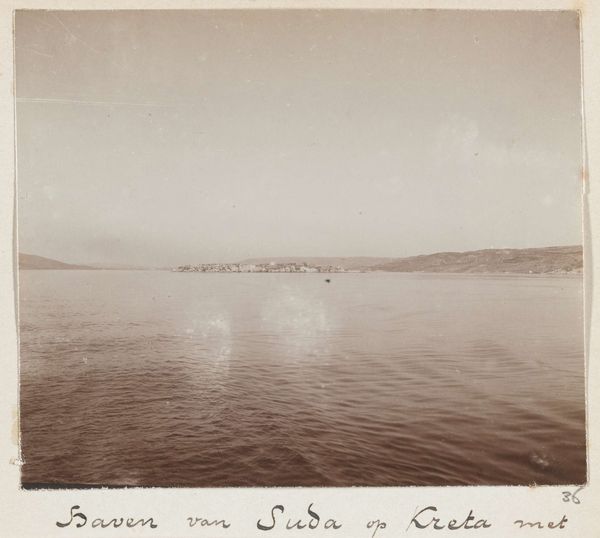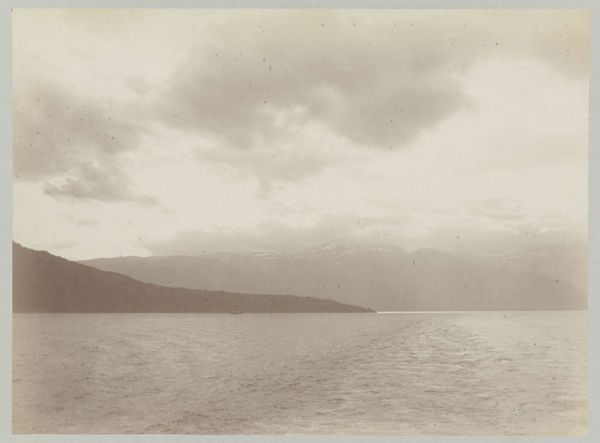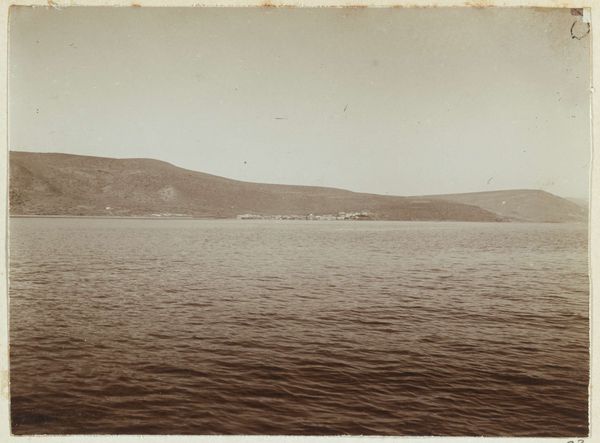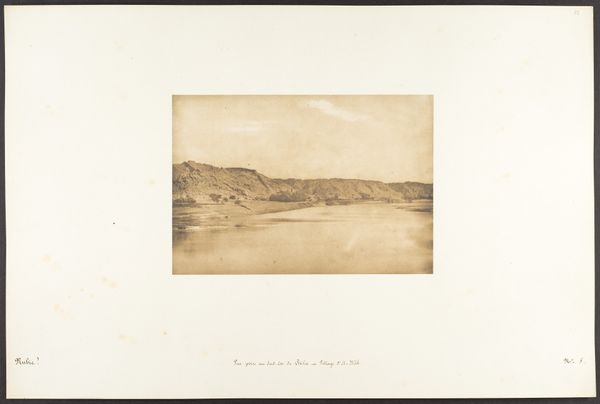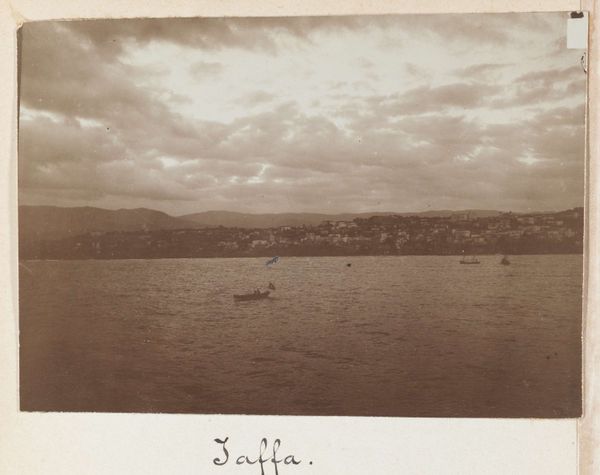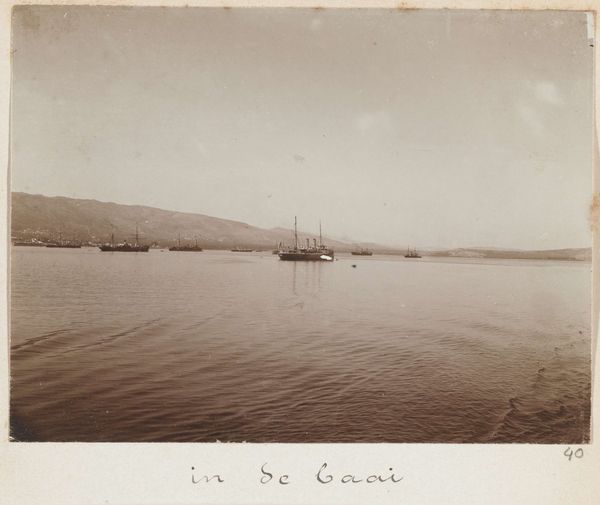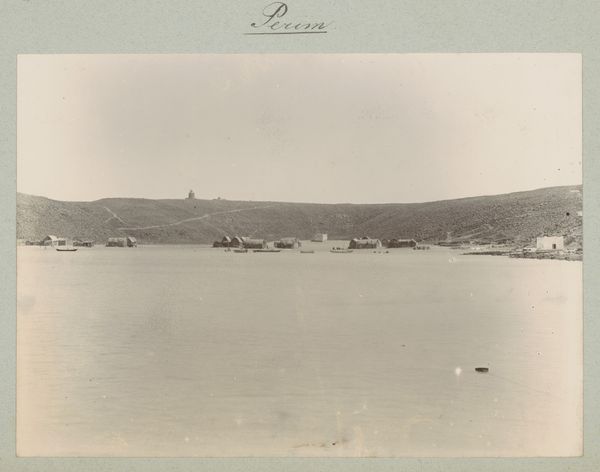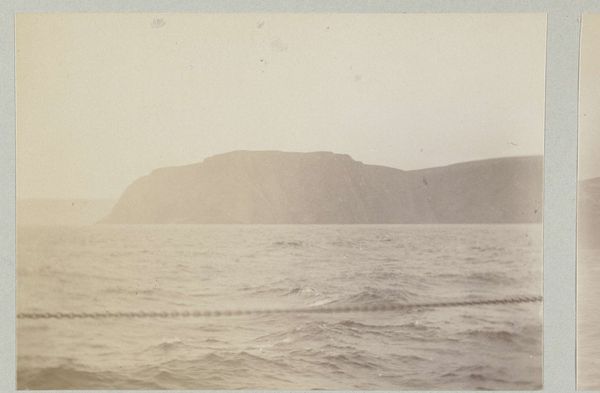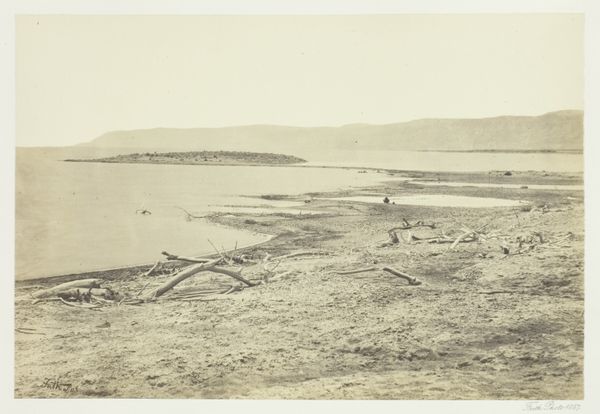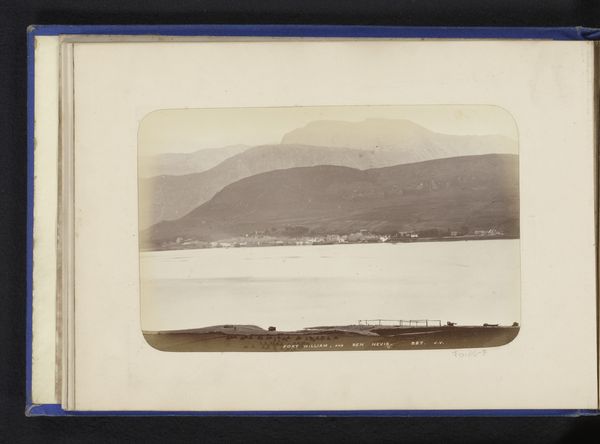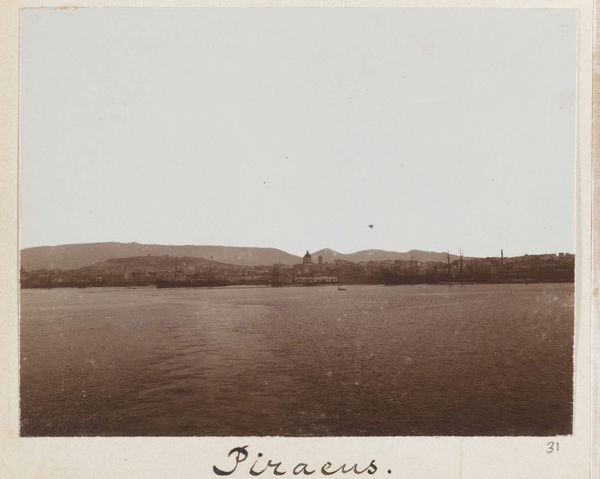
print, photography
# print
#
landscape
#
photography
#
orientalism
Dimensions: height 75 mm, width 101 mm
Copyright: Rijks Museum: Open Domain
Editor: So, this is "Baai van Souda op Kreta" – Souda Bay in Crete – a photograph from 1898 by Johannes Lodewijk Heldring. It’s a hazy, sepia-toned image, and honestly, it gives me a bit of a melancholic feeling. What do you see in this piece? Curator: It’s fascinating how that melancholy translates across time, isn’t it? This photograph, falling under the category of Orientalism, needs to be examined with a critical eye. It was produced during a period of intense colonial expansion and romanticization of the "East." How does the depiction of the Souda Bay potentially participate in constructing a particular narrative about Crete and its people for a Western audience? Editor: So, it’s not just a simple landscape. It’s loaded with historical context. Curator: Precisely. Photography at the time served as a powerful tool. Heldring's lens frames a specific view of Crete, likely catering to Western perceptions of exoticism and the allure of "uncharted" territories. We should be asking: whose perspective is privileged here? What stories are left untold? Does it evoke, perhaps subtly, a sense of Western dominance or entitlement to the land? Editor: That makes me look at it completely differently! I was only considering the aesthetic. I hadn’t considered the power dynamics at play during its creation. Curator: Think about the act of capturing the image itself. Heldring, as a European photographer, is actively constructing a visual representation of Crete for consumption back home. We can analyze it alongside feminist theories about the "male gaze" – how does this photographic gaze reflect and perpetuate power imbalances? What kind of agency is granted, or denied, to the Cretan people in this image? Editor: It’s almost like the photograph is another form of colonization. I definitely need to research more about the history of Crete during that period. Curator: Exactly! That kind of critical inquiry is key. Remember, art history isn't just about aesthetics or artist intentions, but also about power, representation, and the stories that shape our understanding of the world. Editor: Thank you, I'll remember that! I’ll start doing more background research on the artwork's historical context.
Comments
No comments
Be the first to comment and join the conversation on the ultimate creative platform.
